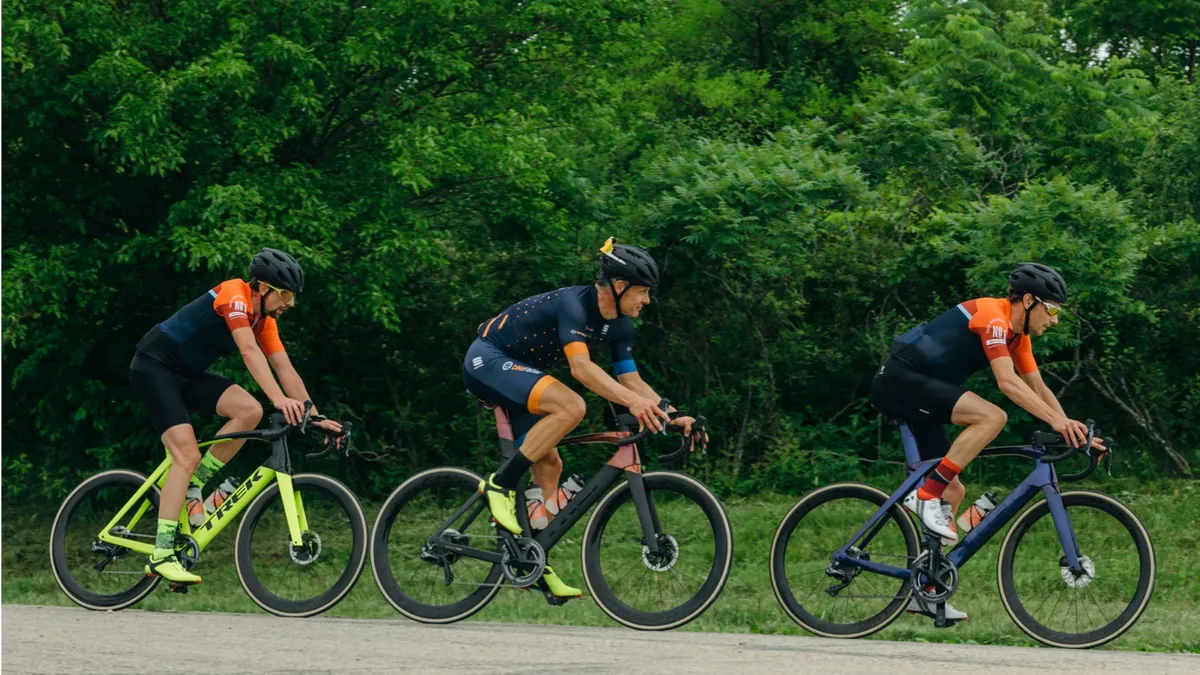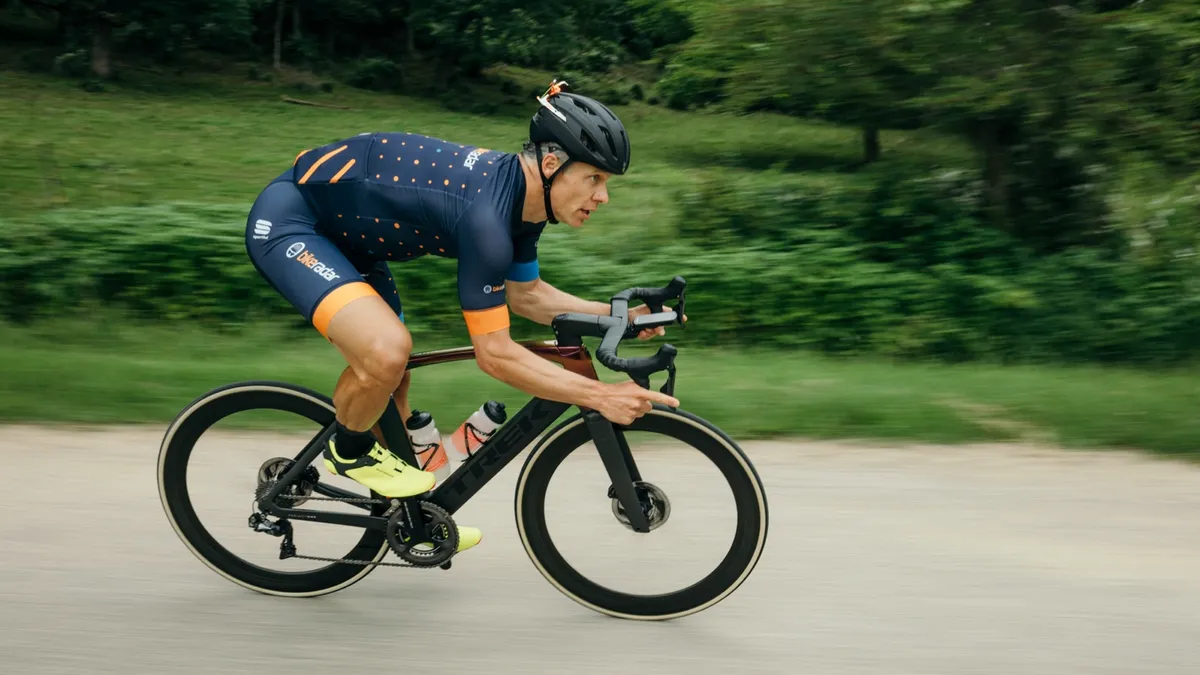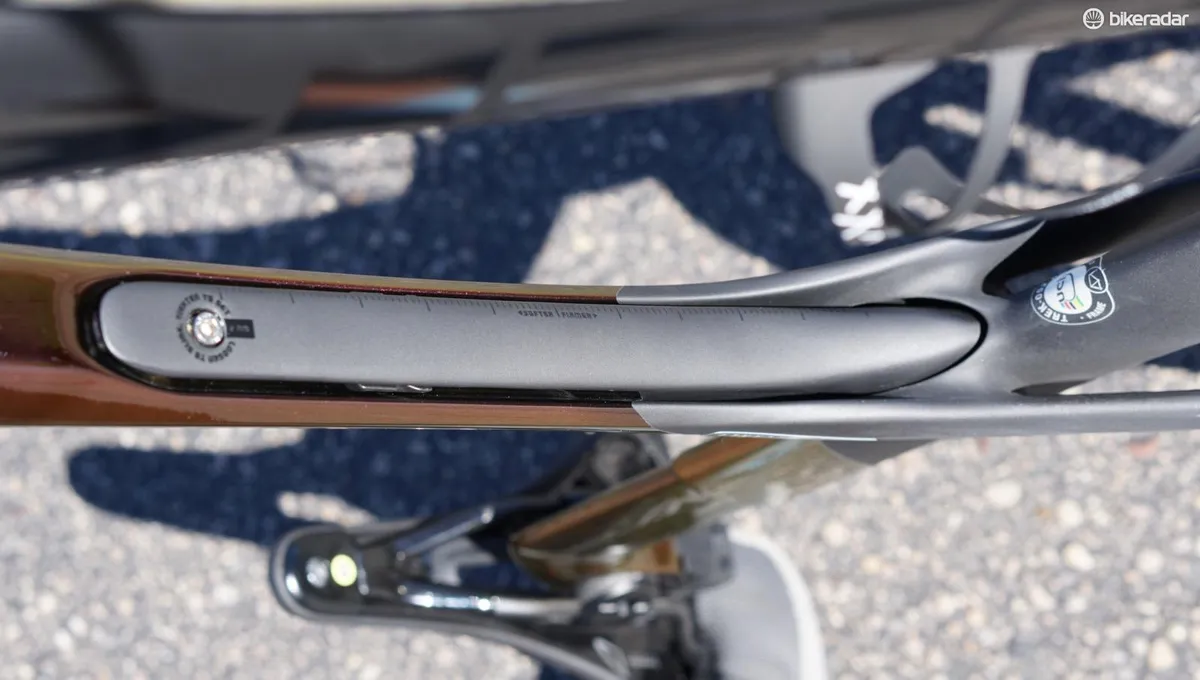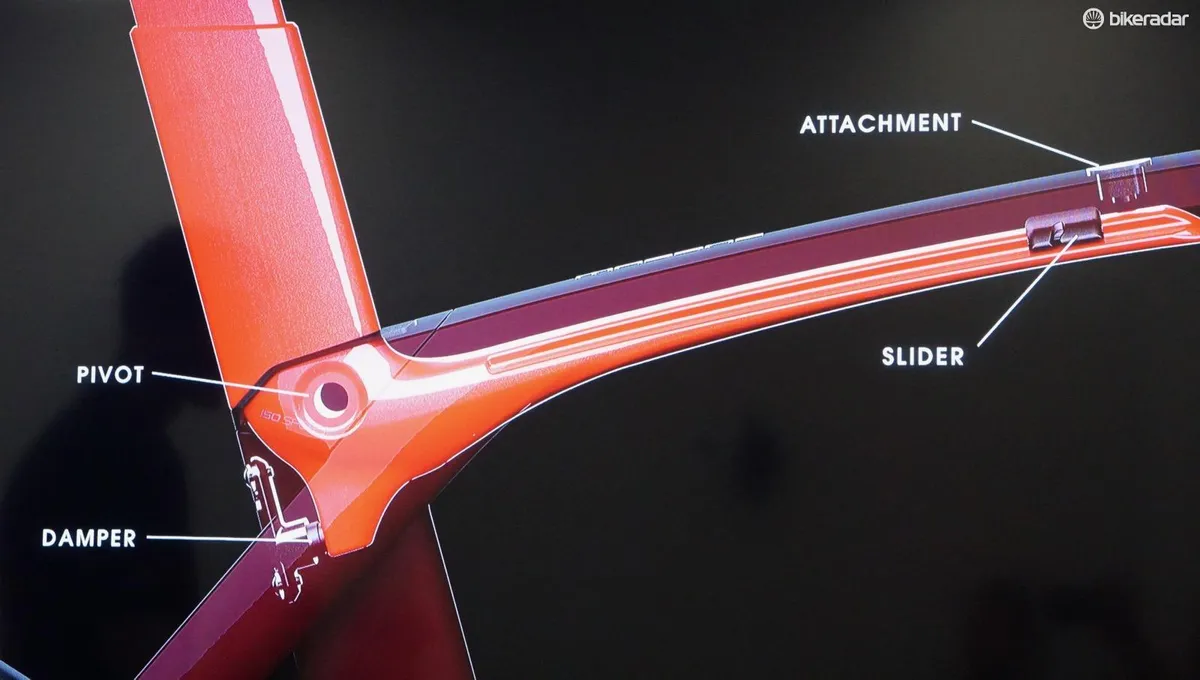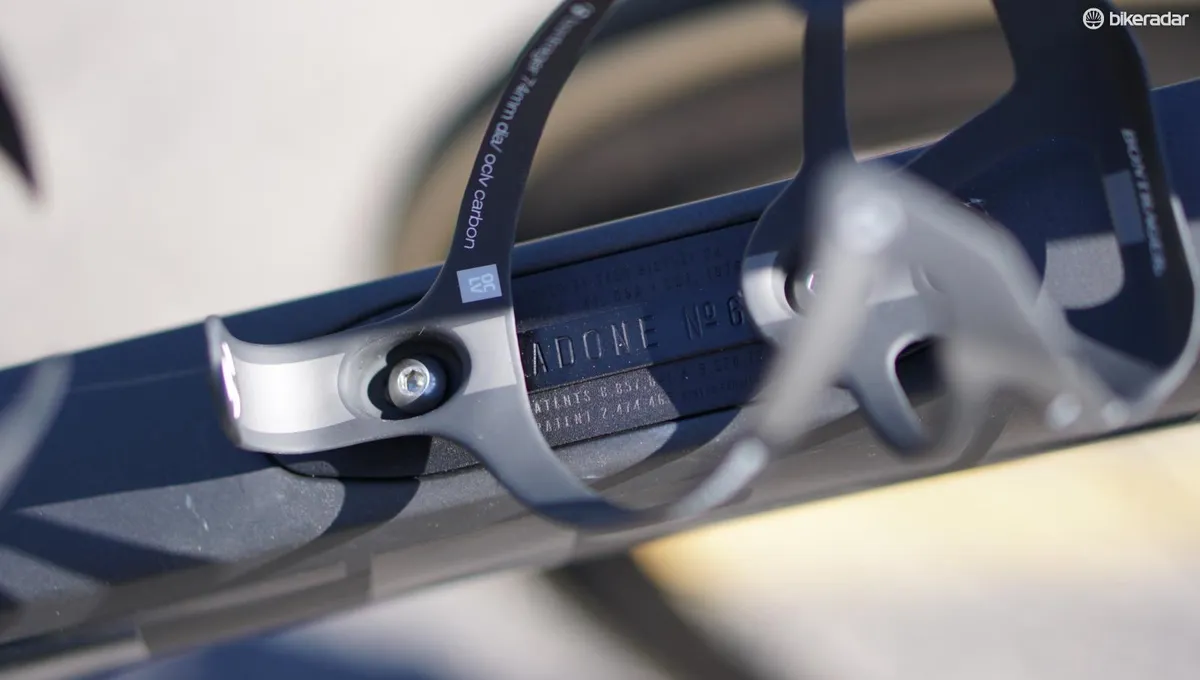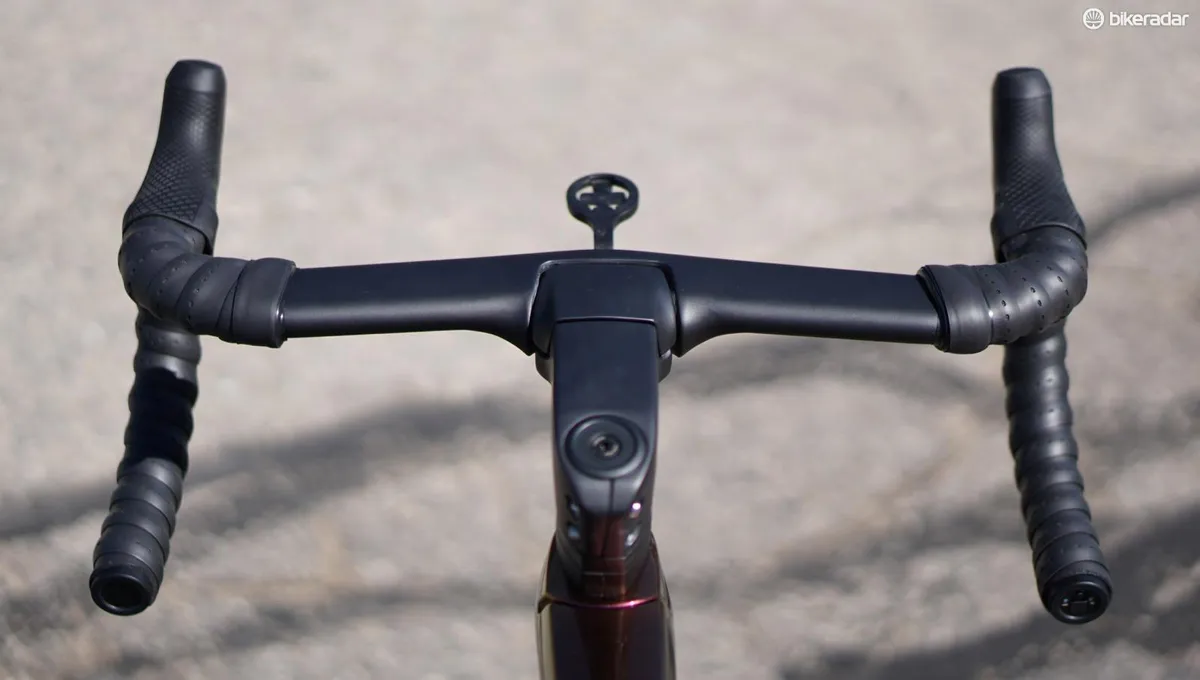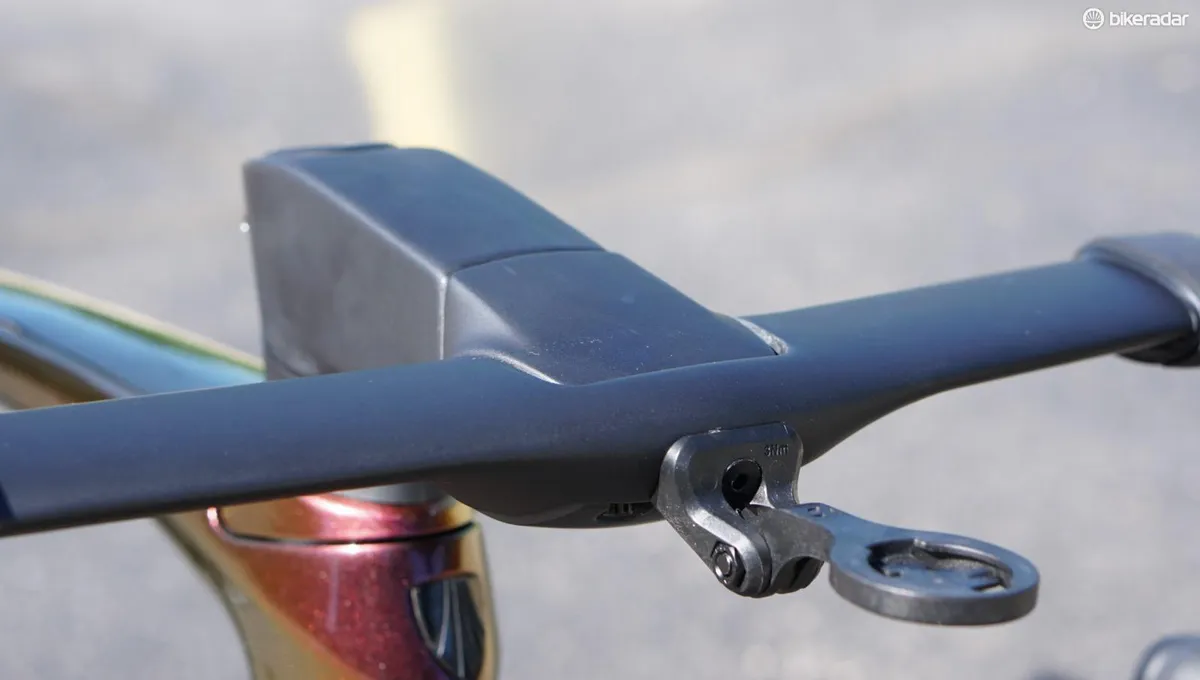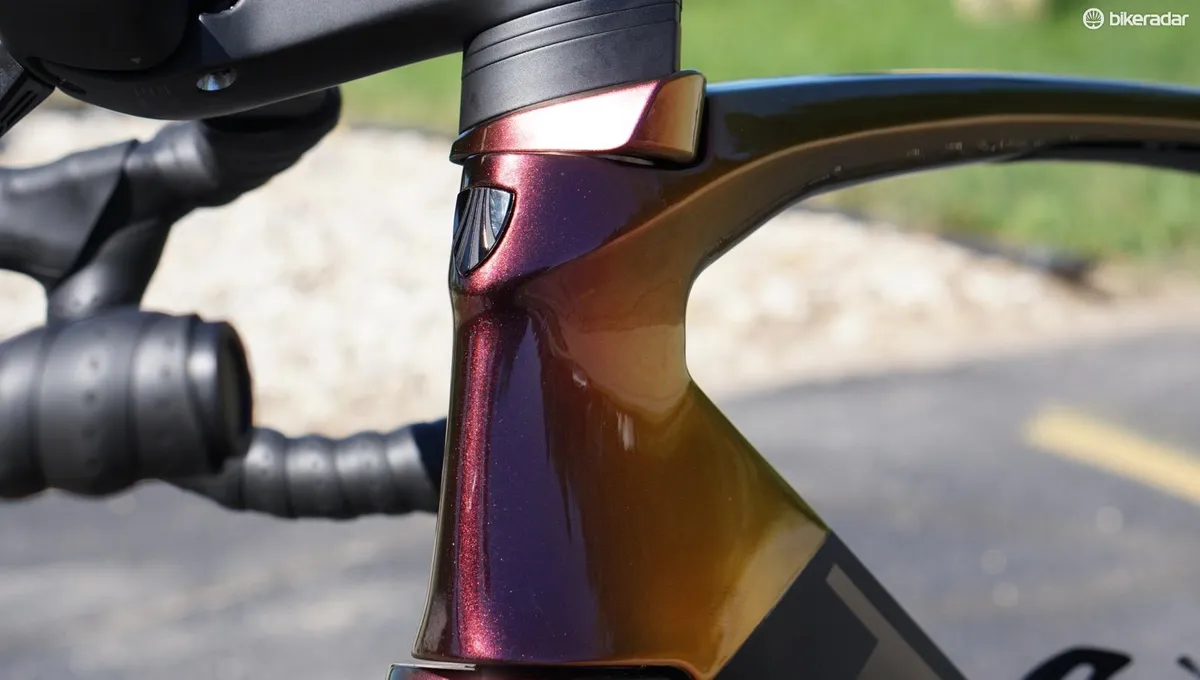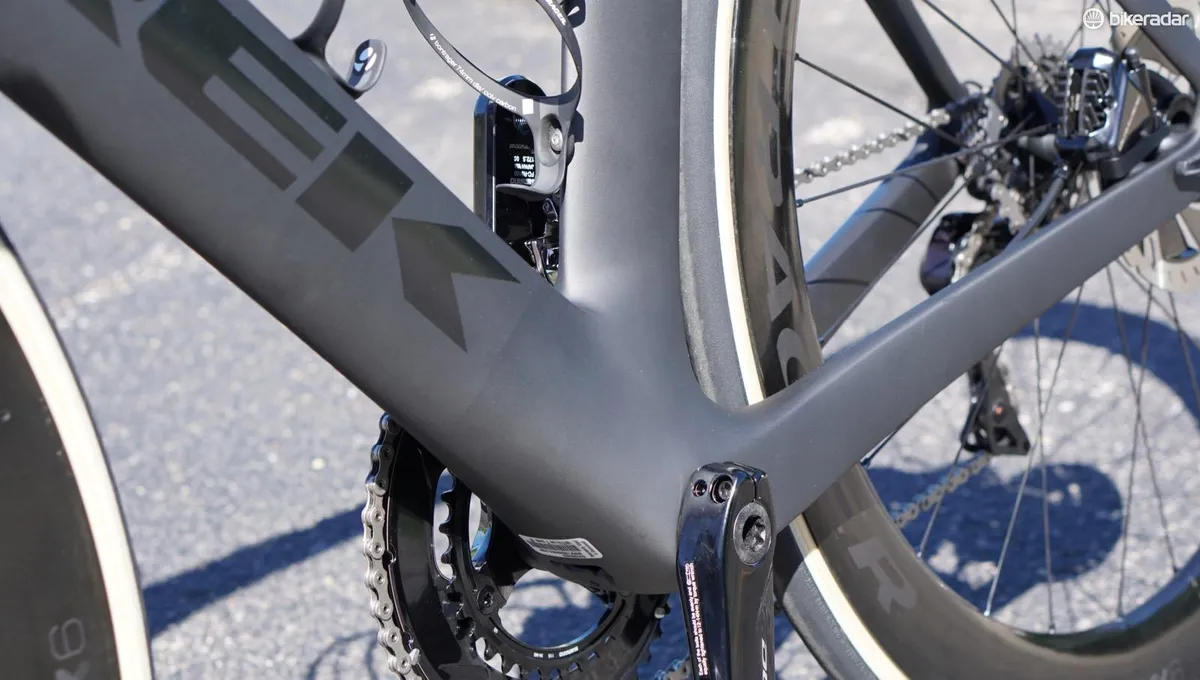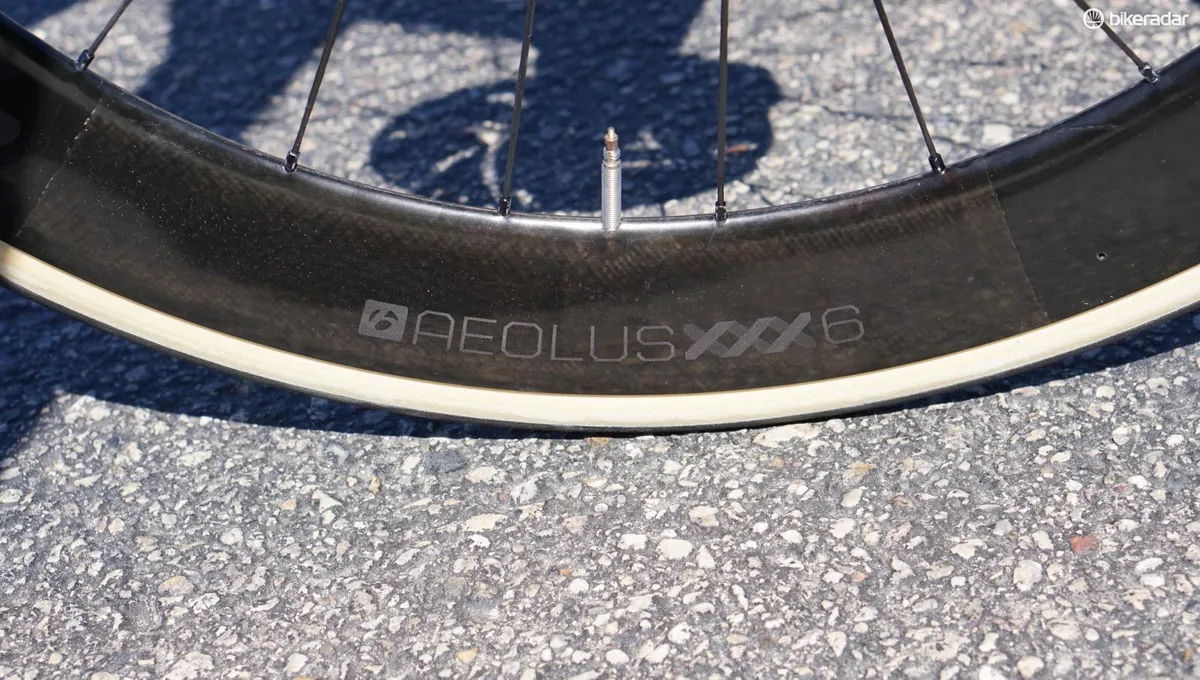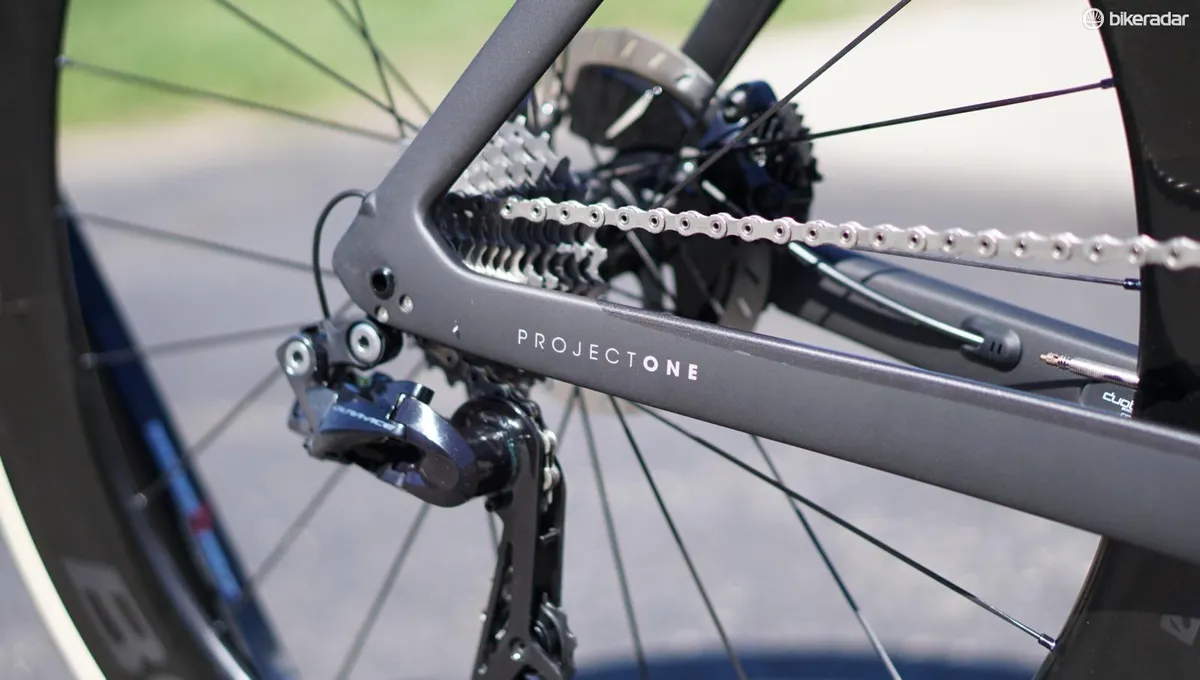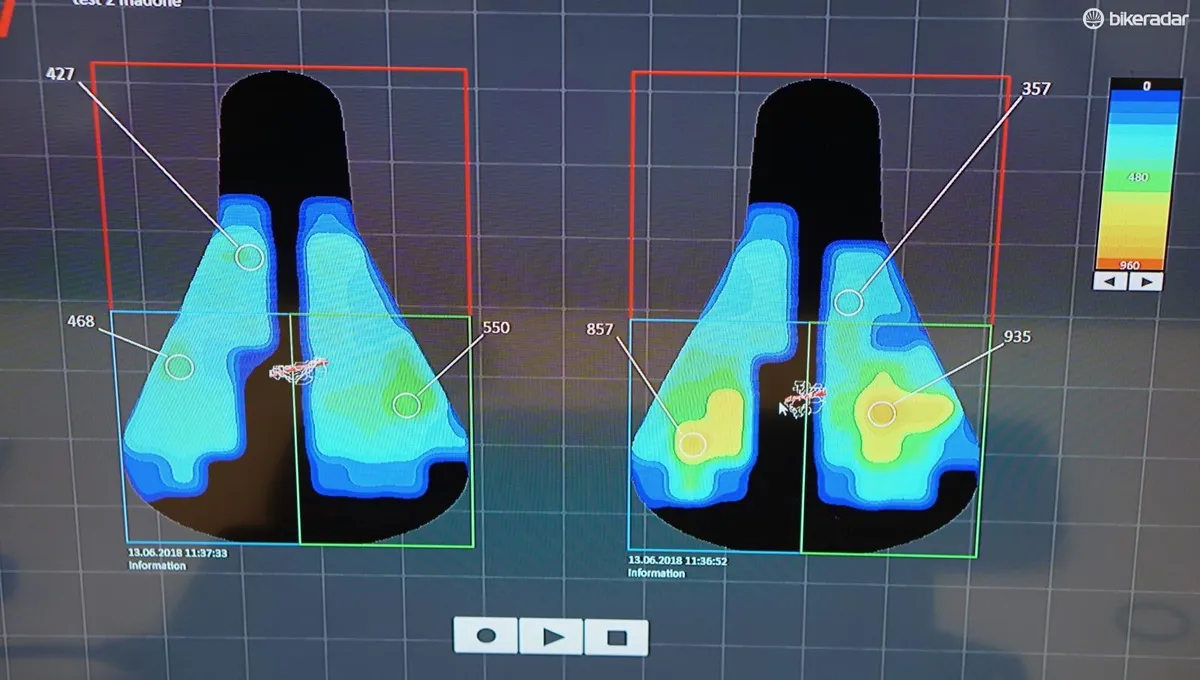Contradictions such as 'aero' and 'comfortable' often found a happy marriage in the first iteration of the Trek Madone with an IsoSpeed Decoupler. On the new Trek Madone SLR, that comfort — or, more accurately, that flexing under the rider — is adjustable. And, yes, the new bike comes with hydraulic discs. I took the top-shelf Trek Madone SLR 9 Disc for a fun ride in Wisconsin for the launch, and then snuck in a few mountain rides back home in Boulder. Here are my first impressions.
Trek Madone SLR 9 Disc highlights
- Complete Shimano Dura-Ace Di2 9170 hydraulic group
- Adjustable IsoSpeed under the top tube
- Integrated bar/stem now has adjustable bar angle
- Available in stock, Project One and now ICON paint finishes

Zoom, zoom ride impressions
Trek Madone SLR Disc - Aero Bike Gets Better Brakes & Adjustable IsoSpeed
Aero bikes are fun to ride fast. But often, the longer the ride, the more quickly that fun dwindles as the speed-over-comfort compromises become apparent. Trek cheated the system with the last iteration of its Madone aero bike by adding flex into the seatmast and seat tube, and in doing so reduced the bone-jarring effects of massive aero tubes.
With the Madone SLR, you can adjust that flex for an even more cushy ride, or lock it down for a stiffer feel. I tried both ends of the spectrum and some points in between. More on that below.
The Madone SLR 9 Disc is a race bike; there are no two ways about that. Even with the IsoSpeed set at its flexiest, the rest of the bike is taut for efficiency, and seemingly every detail shaped for aerodynamics. Trek stacked the deck with Aeolus XXX 6 wheels (which I love — read my review here), Bontrager R4 320 clinchers and Shimano's superb Dura-Ace 9170 group.
But none of this matters if the bike doesn't fit you, right? Before my first test ride, Trek put me through the company's fit protocol, which now includes a gebioMized saddle-pressure mapping tool. I know my fit measurements so we didn't need to really adjust anything, but it was cool to see how pressure on the saddle changed when pedaling at a decent power versus just barely pedaling.
In the photo below, the left saddle image is with harder pedaling and evenly dispresed pressure, compared to the image at right when I am just turning over the pedals and pressure is more concentrated in yellow.

So, about the ride — it's quick.
The machine's stiffness is apparent at most of the acceleration touch points. Stomp on the pedals and the frame will brace against you to transmit power straight to the cassette. Pull back on the bars and the bike will offer unbending leverage as you muscle the bike. And the aero aspects, though less immediately palpable, are just physics. The faster you go, the better the bike gets. And going fast feels easy on this bike.
The Madone's special sauce of course is delivering the aero speed without the jarring ride. This continues with the adjustable IsoSpeed, which is underneath the top tube on the Madone SLR. Trek claims the range is between 17% softer and up to 21% stiffer than the current Madone. I have no way to measure those numbers, but I can say the full-plush setting is considerably softer; it feels like you're riding 40mm tires at 25psi when you hit bumps — not normal for an aero bike! And the other end of adjustment feels, well, more like an aero bike.
So, all the benefits of an aero bike without the main drawback of a rough ride? What's not to love? The only issue I had was with the seatmast's lateral movement. At high-torque, low-RPM pedaling, I could feel and see the saddle moving sideways in relation to the rest of the frame. The lateral movement isn't anywhere near as dramatic as the engineered fore/aft movement, but it's noticeable. I don't know if it's a bad thing; fore/aft movement is comfortable, so what's wrong with side-to-side play? Still, once I noticed it I was a little fixated. It's most apparent when really grinding in a low cadence, which you should probably avoid anyway.

I won't end the rim vs disc brake debate here, especially on aero bikes, but I will say that braking rapidly and easily is a nice thing. Coming down Flagstaff, a local 2,000ft climb by my house that I ride up and down often, I ended up with a few Strava PRs, which you could attribute to an aero bike with disc brake and/or me just eating more pastries this summer. I also ended up with some fairly dramatic squealing from braking hard into corners and then leaning the bike.
In my experience, disc brakes are better, heavier and, often, noisier than rim brakes. With the Madone SLR, you can get a bike with whichever system you prefer.
Like all aero bikes, the Madone SLR isn't super light; this 56cm weighs 7.4kg with the Aeolus XXX 6s. The rim bike is about about 300g lighter.
IsoSpeed adjustment: how to do it and how it feels
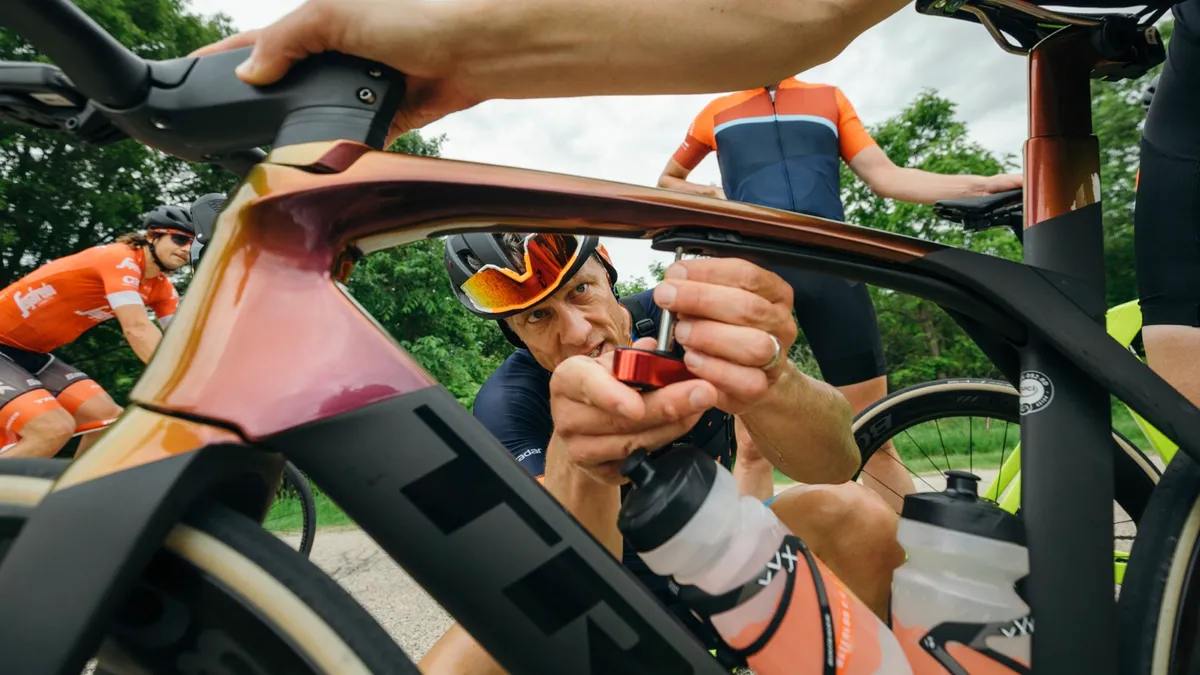
The star of the show is the adjustable IsoSpeed, which you change with two bolts and a slider. First, you unscrew a little 2.5mm Allen on the back of the seat tube, which removes tension on an elastomer damper that butts up against the moving frame piece. Then, you removed the 4mm bolt under the top tube at the end of the IsoSpeed boom. Then, you adjust the slider forward for more flex, or rearward for less.
The process takes about three minutes, and obviously isn't something you can do while riding. It probably isn't anything you would regularly change once you find your desired setting. Trek-Segafredo rider Kiel Reijnen said he would probably leave his bike alone except for cobbled races.
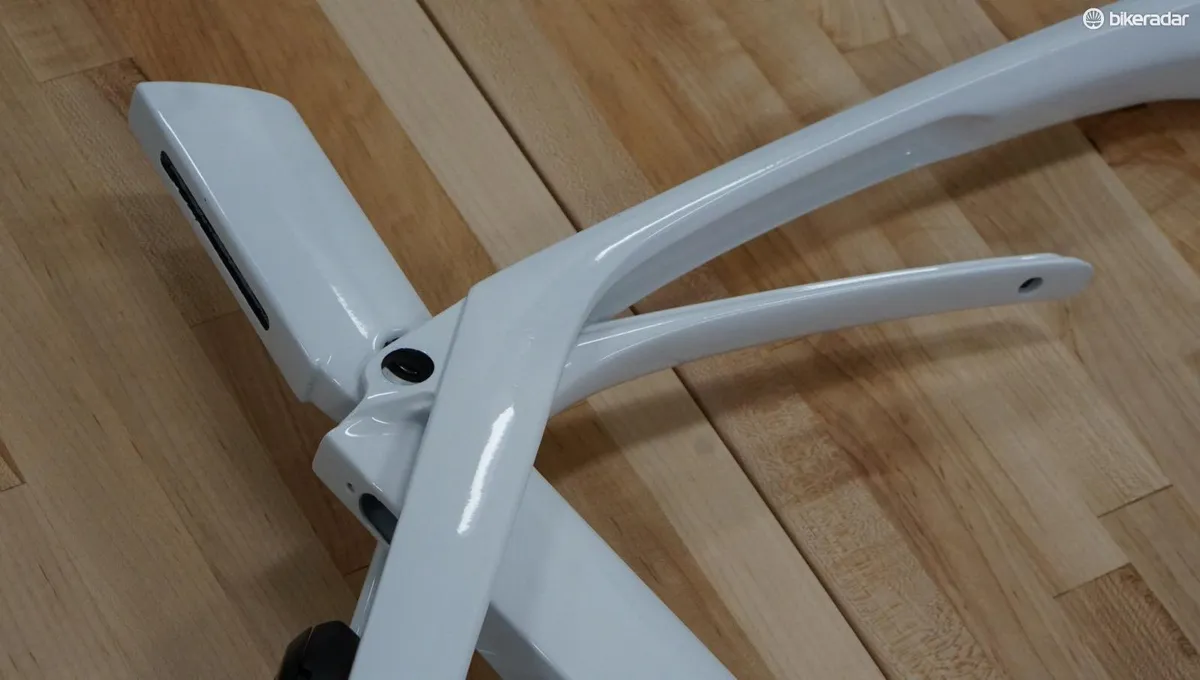
Trek first introduced adjustable IsoSpeed on the Domane endurance bike, where it featured on the seat tube. The single-leaf-spring concept is the same here, just with a 90-degree bend in the moving part.
The beauty of the IsoSpeed is how it feels like a normal bike until you hit a bump. Since the suspension consists of a carbon tube and not a spring or a hydraulic system, there is no bob when pedaling normally. You can create rider-induced flex by hopping on the bike cyclocross style or an intense seated sprint, but in normal conditions it is bumps in the road activating the system.
I don't know how much the saddle moves back and down, but it isn't much. The introduction of the elastomer damper is curious to me, as I hadn't really noticed a sharp kickback on the last Madone's IsoSpeed as the structure returned to its original position after a bump. Perhaps lighter riders felt this more, or perhaps I'm just insensitive!
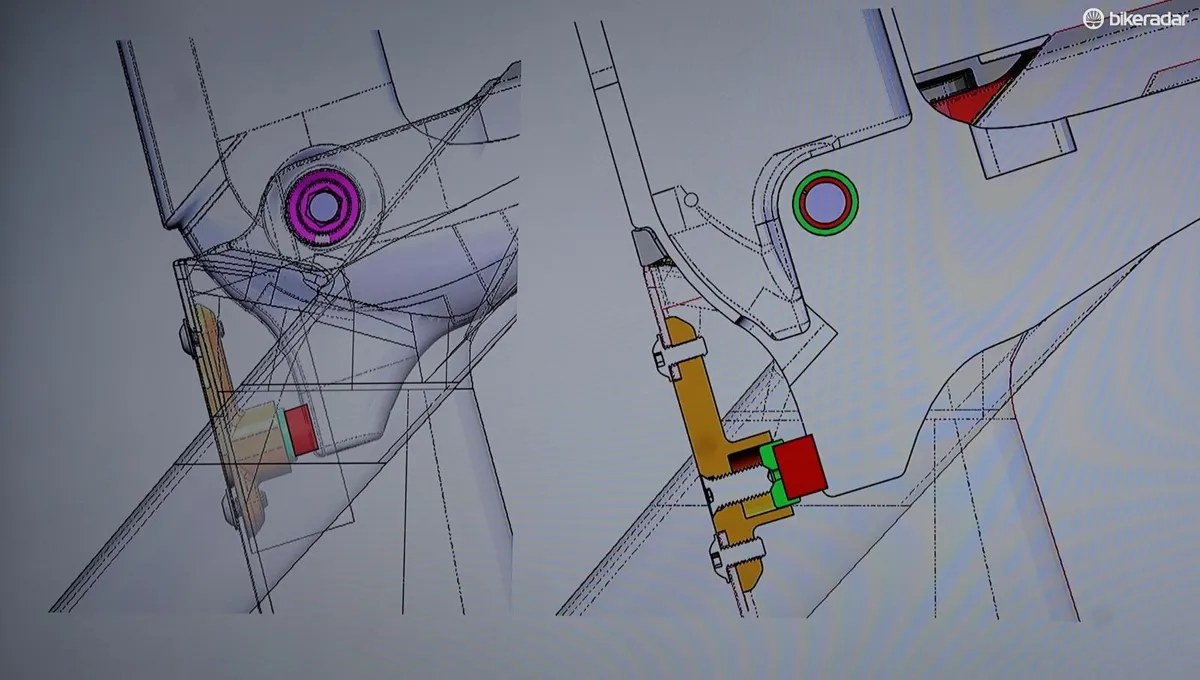
Improvements in the bar/stem
Integrated bar/stem setups look great on the showroom floor and in the wind tunnel. But… unless you happen to share the same ergonomic preferences as the bar's designer, a great fit can be pretty hit or miss. For me, the original Madone bar was a miss, mostly because the thing hit my wrists when in the drops — and I couldn't rotate the bar to address this.
This new bar has more clearance thanks to a different curve up top, and you can rotate the bar /-5 degrees, while still maintaining the full internal routing from the levers to the frame.
If you are looking to buy this bike or any aero bike with an integrated bar/stem, invest the time in getting your measurements dialed beforehand, ideally with the shop where you are going to buy it. There is no 'just swap stems' option here.
Once that hurdle is cleared, I believe this bar will be good for most riders who don't often ride on the tops often. While the tops are rounded off a bit at the back and have a slight backsweep that is relatively comfortable to grab, the bar is designed to be unused with unwrapped tops. It's an aero bar, after all.

With my fit dialed, I found riding on the hoods and in the drops to be comfortable. In sharp contrast to the IsoSpeed-enhanced rear, the front end of the bike feels like a rigid race bike.
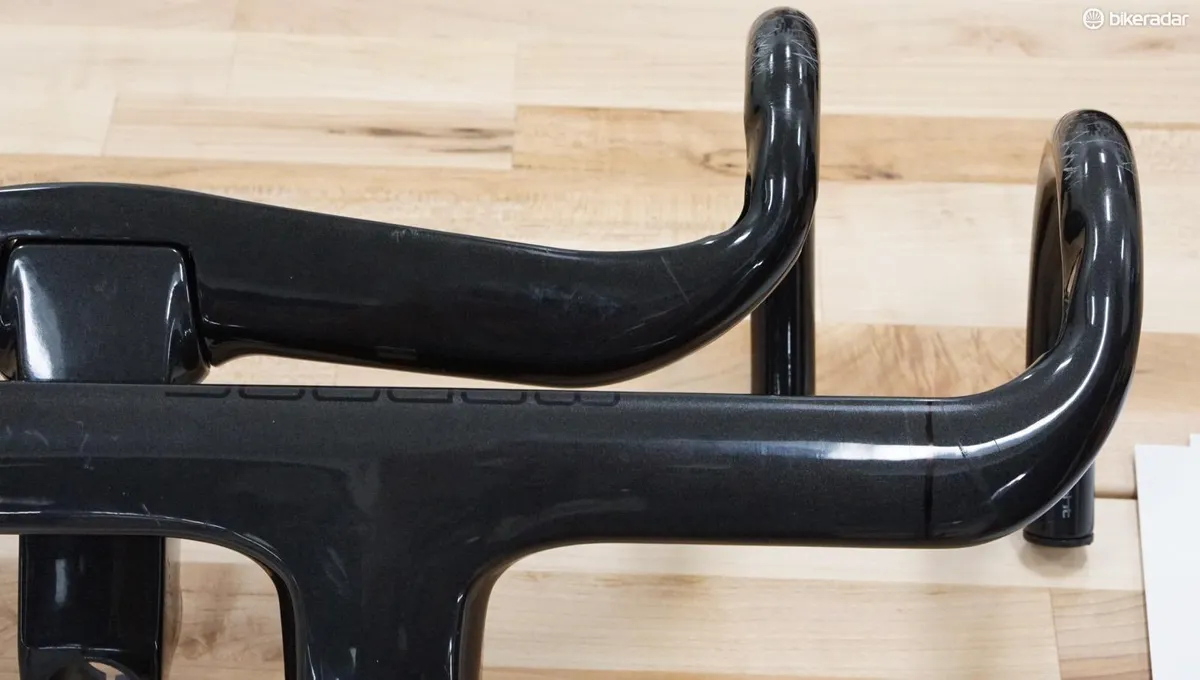
Limitations of a super bike
All bicycles are a balancing act. Keith Bontrager is credited with the "strong, light, cheap — pick two" adage, and variations on this can't-have-it-all reality apply to bikes. For aero bikes, you can't have a crazy-fast shape and stock, easy-to-swap parts.
Similarly, you can't have all the aero shaping and the weight of a climbing bike.
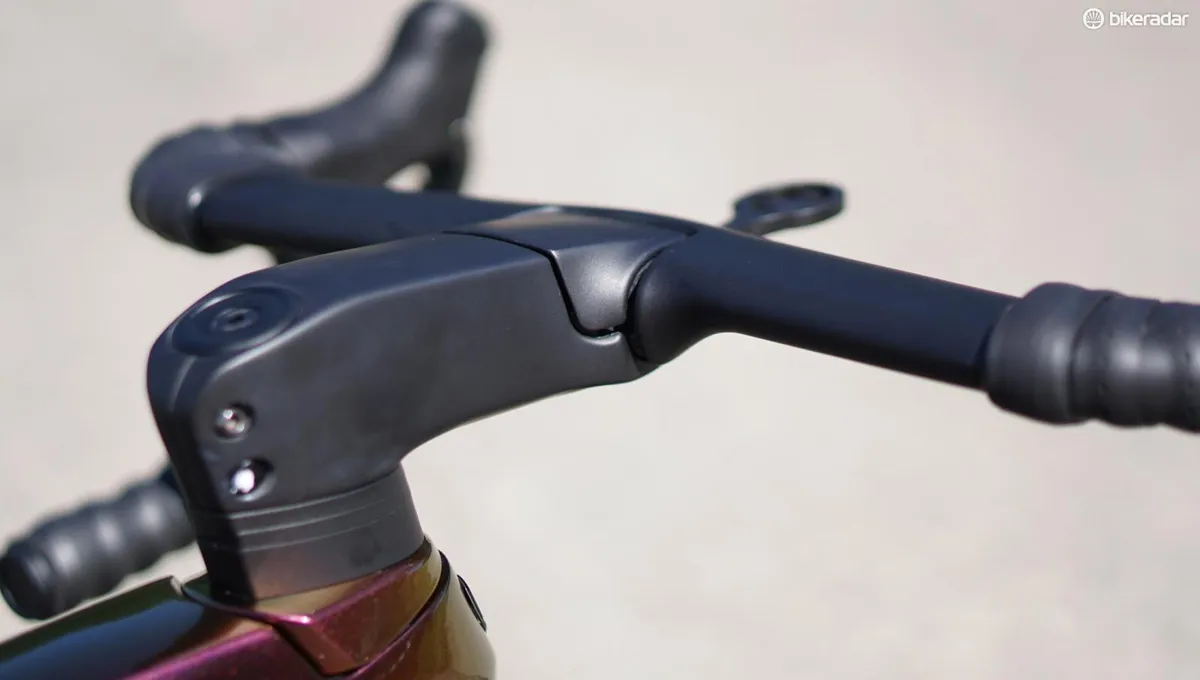
It's just a matter of priorities. What are yours?
With IsoSpeed, Trek cracked the 'aero or comfort' code. And with the Madone SLR, Trek also boosted the tire range of what has traditionally been made with aero bikes: 28mm is the recommended max, but you can stick a 32mm tire in the bike. (Although, if you are going all-in on aero enough to buy a top-shelf bike like this, why would you run tires bigger than 28s?)

What's missing, what's wiggling
With the Madone SLR, Trek has delivered an impressive aero race bike. The list of plusses on this bike is long. If I were a paying customer, though, I would like to see three things added to the stock machine: Di2 sprint shifters for more shift-position options, a D-Fly for Garmin control from the hood buttons, and a power meter.
I realize not everyone wants a power meter, but if you are nerded out enough to consider a high-end aero bike, then I would be you are nerded out enough like me to train with power. I know a lot of the folks at Trek do. This is the money-is-no-object model we're talking about here. It should be perfect.
As far as the frameset's construction, I love the adjustable IsoSpeed and the resulting ride. I am a little perplexed about the lateral movement under high-torque loads, though. As I wrote above, I'm not convinced it is a negative thing, but it is a noticeable thing.
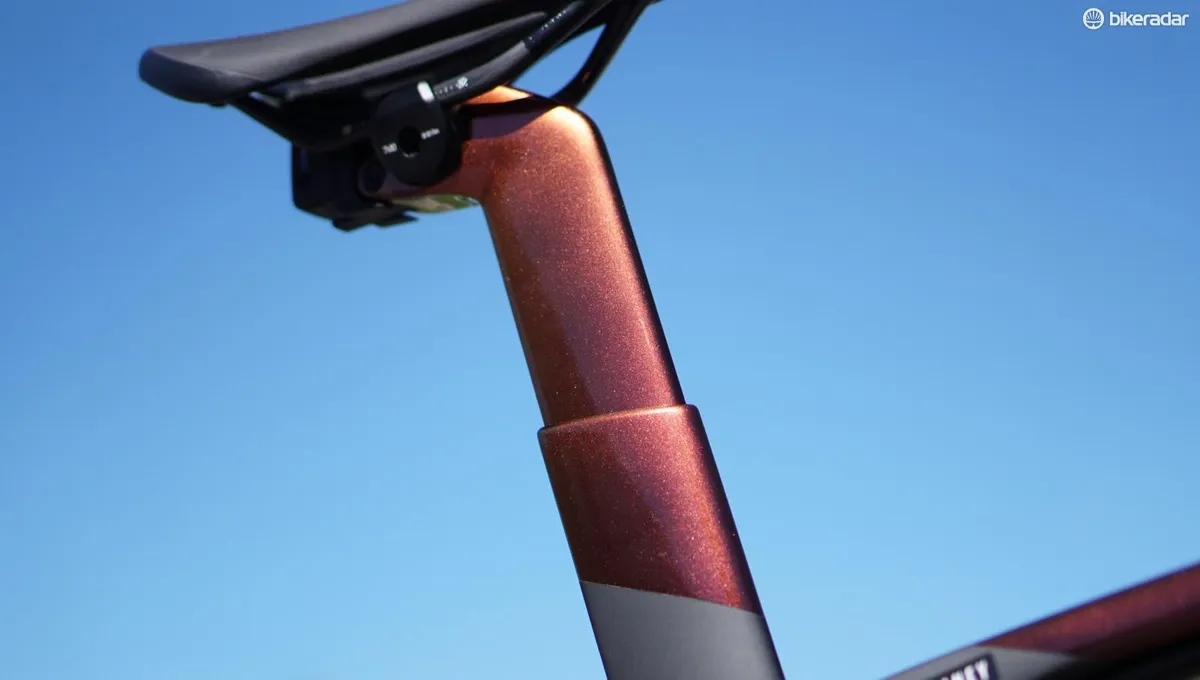
Trek Madone SLR 9 Disc initial verdict
The Trek Madone SLR 9 Disc is a remarkable aero bike for both its comfort and the adjustability of the frame stiffness. The parts spec is all absolute top end — including the Bontrager Aeolus XXX 6 wheels. Many times house brands are sub-par; here that is absolutely not the case.
Trek claims the Madone SLR is the fastest aero bike out there of those it has tested. That doesn't include the just-released Specialized Venge but it does include the current Venge ViAS. But realistically, folks, aero bikes with aero wheels are measurably faster than round-tube bikes with low-profile wheels. We know this. We also know that the difference in the very best high-end aero bikes with deep wheels is quite small. You aren't going to win or lose a city-limits sprint or a Tour de France stage because of an extra or a shaved gram of drag. We also know comfort matters. If you want a fast machine with all-day comfort, you will be hard pressed to find anything in the world like the Madone SLR.
